Ting-Hao K. Huang
Do Large Multimodal Models Solve Caption Generation for Scientific Figures? Lessons Learned from SCICAP Challenge 2023
Jan 31, 2025Abstract:Since the SCICAP datasets launch in 2021, the research community has made significant progress in generating captions for scientific figures in scholarly articles. In 2023, the first SCICAP Challenge took place, inviting global teams to use an expanded SCICAP dataset to develop models for captioning diverse figure types across various academic fields. At the same time, text generation models advanced quickly, with many powerful pre-trained large multimodal models (LMMs) emerging that showed impressive capabilities in various vision-and-language tasks. This paper presents an overview of the first SCICAP Challenge and details the performance of various models on its data, capturing a snapshot of the fields state. We found that professional editors overwhelmingly preferred figure captions generated by GPT-4V over those from all other models and even the original captions written by authors. Following this key finding, we conducted detailed analyses to answer this question: Have advanced LMMs solved the task of generating captions for scientific figures?
SciCapenter: Supporting Caption Composition for Scientific Figures with Machine-Generated Captions and Ratings
Mar 26, 2024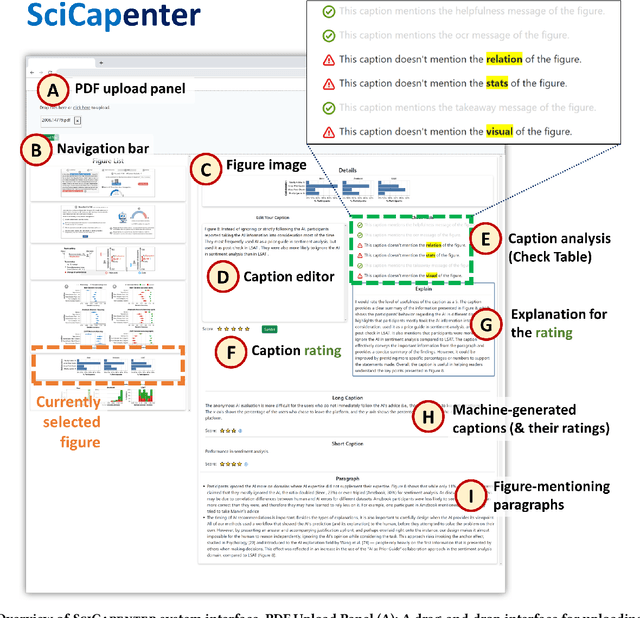



Abstract:Crafting effective captions for figures is important. Readers heavily depend on these captions to grasp the figure's message. However, despite a well-developed set of AI technologies for figures and captions, these have rarely been tested for usefulness in aiding caption writing. This paper introduces SciCapenter, an interactive system that puts together cutting-edge AI technologies for scientific figure captions to aid caption composition. SciCapenter generates a variety of captions for each figure in a scholarly article, providing scores and a comprehensive checklist to assess caption quality across multiple critical aspects, such as helpfulness, OCR mention, key takeaways, and visual properties reference. Users can directly edit captions in SciCapenter, resubmit for revised evaluations, and iteratively refine them. A user study with Ph.D. students indicates that SciCapenter significantly lowers the cognitive load of caption writing. Participants' feedback further offers valuable design insights for future systems aiming to enhance caption writing.
GPT-4 as an Effective Zero-Shot Evaluator for Scientific Figure Captions
Oct 23, 2023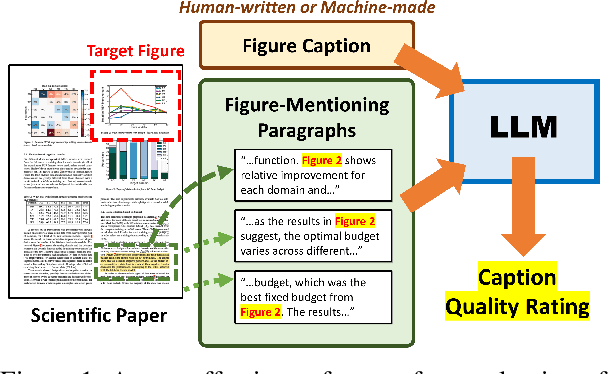
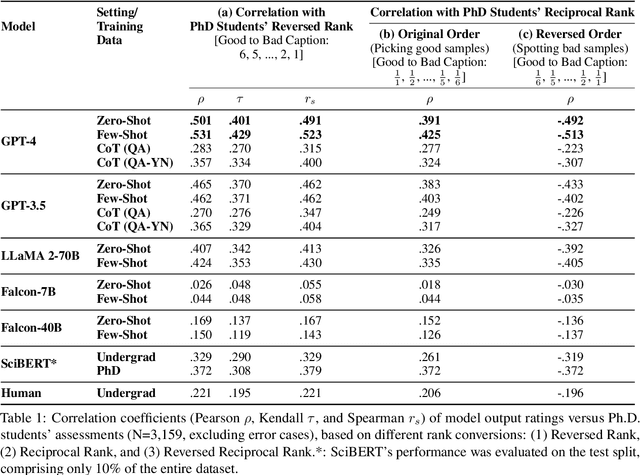
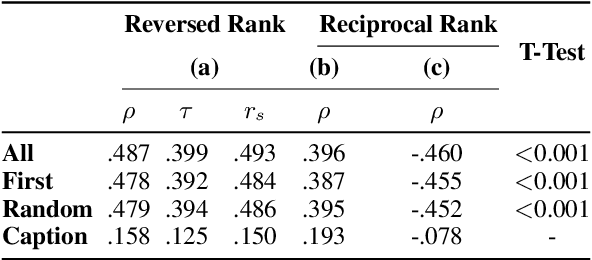
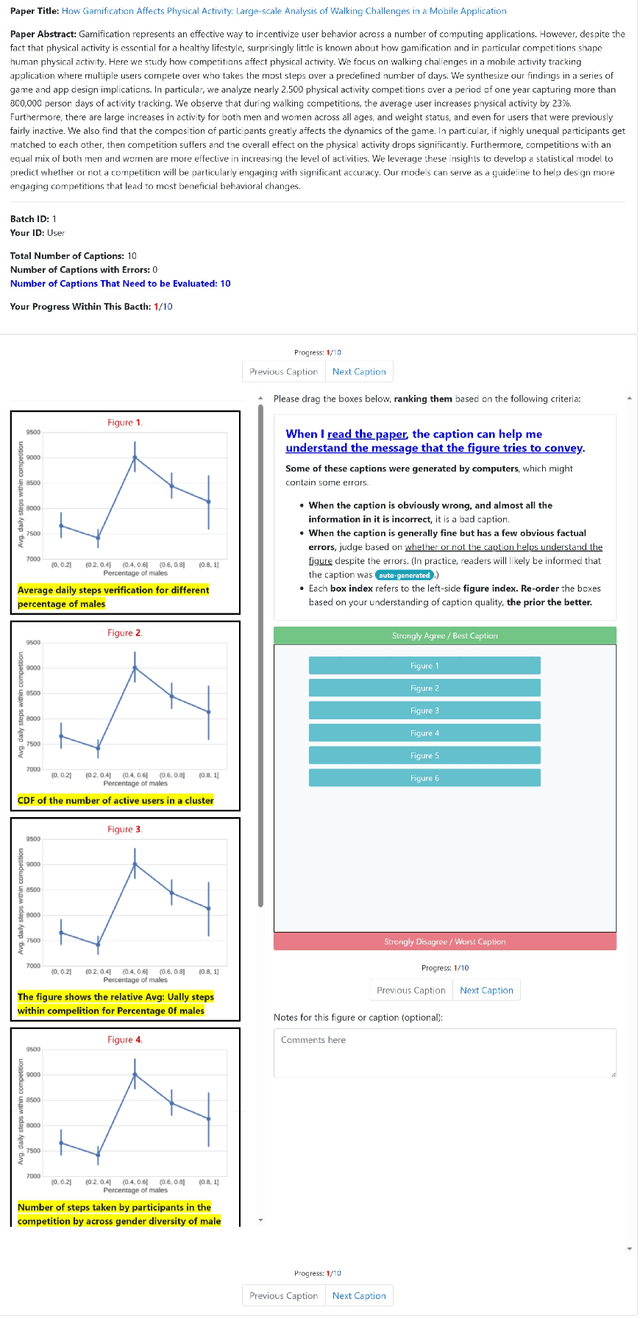
Abstract:There is growing interest in systems that generate captions for scientific figures. However, assessing these systems output poses a significant challenge. Human evaluation requires academic expertise and is costly, while automatic evaluation depends on often low-quality author-written captions. This paper investigates using large language models (LLMs) as a cost-effective, reference-free method for evaluating figure captions. We first constructed SCICAP-EVAL, a human evaluation dataset that contains human judgments for 3,600 scientific figure captions, both original and machine-made, for 600 arXiv figures. We then prompted LLMs like GPT-4 and GPT-3 to score (1-6) each caption based on its potential to aid reader understanding, given relevant context such as figure-mentioning paragraphs. Results show that GPT-4, used as a zero-shot evaluator, outperformed all other models and even surpassed assessments made by Computer Science and Informatics undergraduates, achieving a Kendall correlation score of 0.401 with Ph.D. students rankings
 Add to Chrome
Add to Chrome Add to Firefox
Add to Firefox Add to Edge
Add to Edge